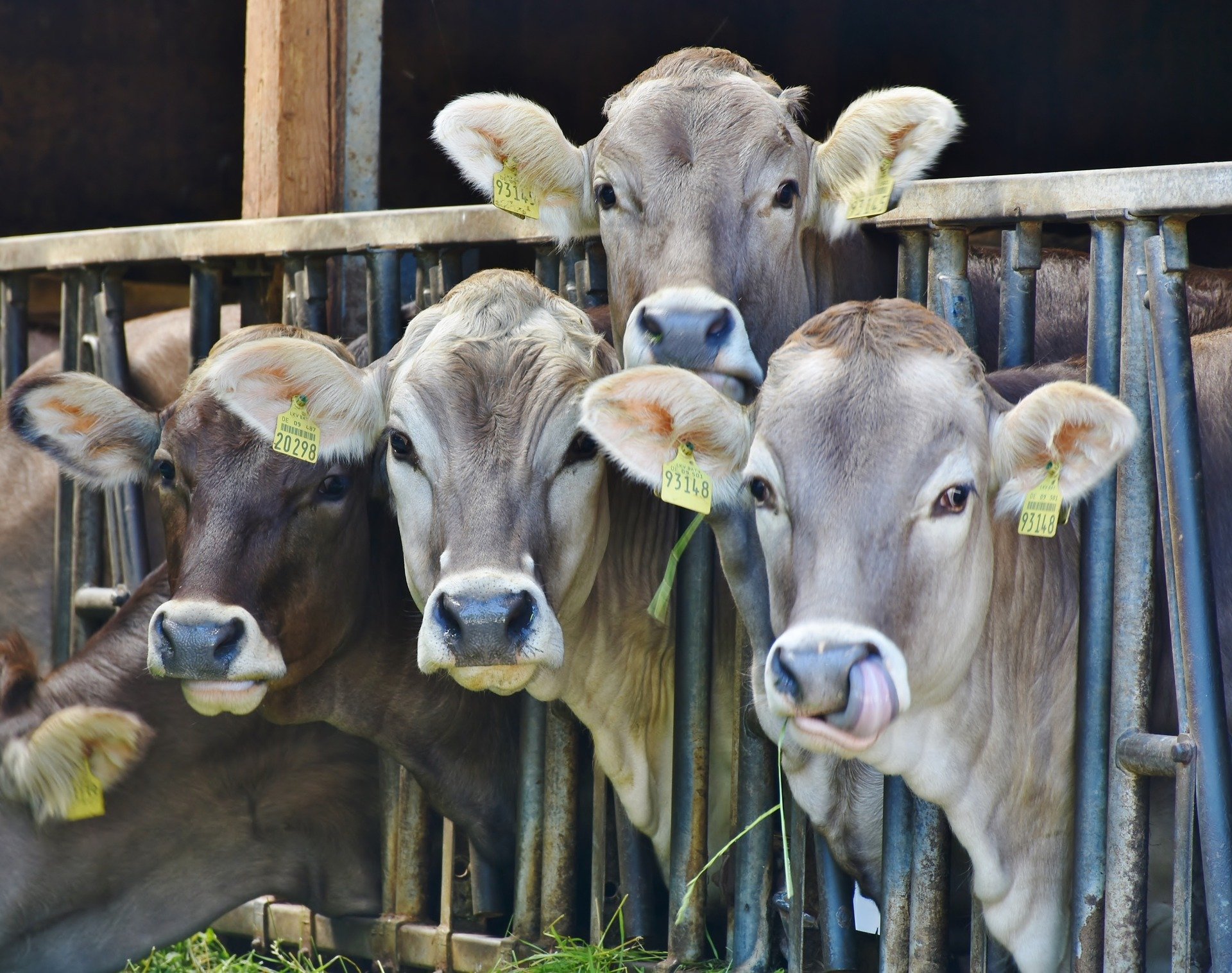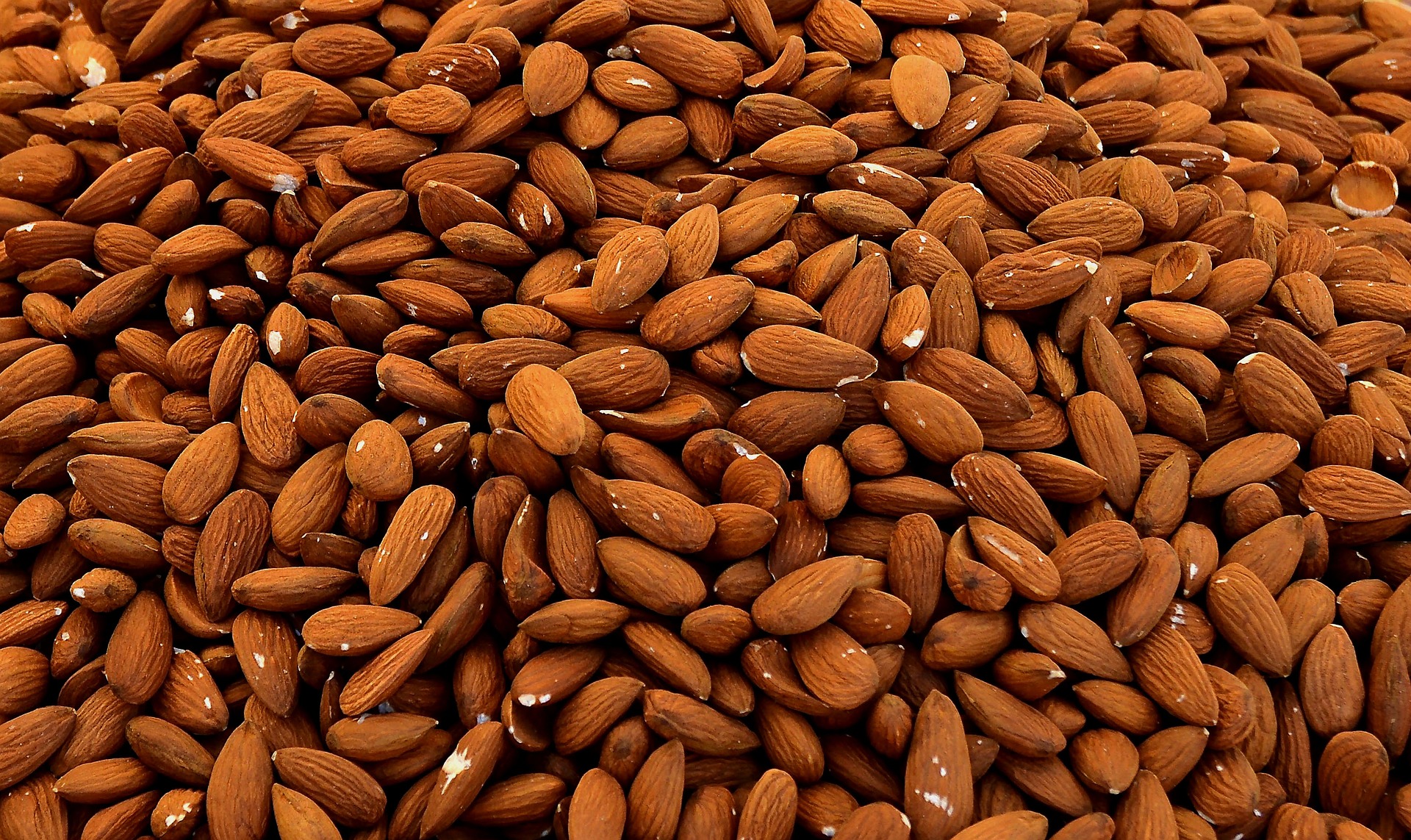What Milk Is Best? Environment, Cows, Almonds, and You
A popular article comparing types of milk has some major flaws.
21 August 2017

Cow Milk Vs. Almond Milk
For any scientist, it's common to feel like a news article is oversimplifying or spinning a mundane discovery into something flashy and sexy. Recently, a friend sent me a New Yorker article about different types of milk. This article had some serious issues. Let's go through it, debunk some myths, and get informed!

An article about milk, but it has some problems!
Soy and Hormones
“Soy milk… ...was for people who enjoyed having their endocrine systems disrupted, or who worked for Monsanto (Goodyear, 2015)”
Hmm. Soybeans do contain isoflavones that are a source of phytoestrogen, which in theory can act like estrogen in the body. But does this affect people’s hormone systems? No, this popular myth has been repeatedly debunked (Messina, 2010) (Hamilton-Reeves et al., 2010) (Chen et al., 2014). In fact, soy consumption is associated with a reduction of prostate cancer risk in men (Yan and Spitznagel, 2009).
It's true that Monsanto is a big producer of soybeans, and corn too (Plume, 2017). But that’s a weird point to make here, because “Around 60 percent of corn and 47 percent of soy produced in the United States is used in domestic livestock production for feed (Olson, 2006).” Goodyear inadvertently brings up an important point regarding cow milk here: what the cows are being fed. We’ll come back to this.
Almond milk takes 13% less water to make than cow milk
Almonds and Water
“almond milk is now routinely decried as one of the worst water hogs around (Goodyear, 2015)”
Even though this article is about the differences between cow and almond milk, there is no direct comparison between the two, which you’d think would be important. So let’s compare water usage ourselves, using an earlier article from the same source that the first article used: Mother Jones. Here, making almond milk is estimated to take 23 gallons of water while cow milk takes an estimated 30 gallons. This article also shows an estimate of how much water it takes to make the alfalfa that dairy cows eat (Park and Laurie, 2014).
Speaking of alfalfa, meat and dairy products accounted for 47% of California’s water footprint in 2012, “due to the amounts of water-intensive feed required to raise the animals (Fulton et al., 2012).” With 1,755,000 dairy cows as of 2017, California has the most dairy cows of any state by a wide margin of almost 500,000 (U.S. Department of Agriculture, 2017). This is important, because California has been in a drought for the past several years!

Bales of alfalfa, ready to feed cows
Cattle milk also leads to about 20% of the greenhouse gas emissions caused by all livestock globally, according to the Food and Agriculture Organization of the United Nations (Gerber et al, 2013). Almonds presumably create fewer greenhouse gasses, because they do not fart.
This article duly criticizes the practice of mono-cropping (growing only one crop on a plot of land) and the impacts of its byproducts. But then the author turns around to tell you that it’s useless to try to “climate-proof” your diet. While institutional change is more important than individual-based environmentalism (Csutora, 2012), there is power in the hands of the consumer, and to advocate for nihilism in the face of environmental decisions people make in their day to day lives is dis-empowering and wrong.
Lastly, she quotes the C.E.O. of a meat company to say that cows are appropriate to farm during a drought because they “evolved in drought prone areas (Goodyear, 2015).” Maybe we should take that with a grain of salt, considering what we just researched.
About 20% of global greenhouse gas emissions come from dairy farming
Ethics of Dairy
“...while cow milk was for gluttonous torturers (Goodyear, 2015).”
This seems like an ironic leap: is drinking milk as an act of violence? Well, maybe. While cows can live for 20+ years (Dewey and Ng, 2001), dairy cows don’t, as reported by The Organic Center in 2010. On a high-production conventional farm they live an average of 4.48 years, as opposed to 6.45 years on a less intensive organic farm. But why do they still die so young? They are culled after production drops and sold as meat (Charles Benbrook et al., 2010).
Some, anyway. According to the same study “A certain percentage of lactating cows become ill, suffer serious problems during the delivery of a calf, or are injured, and as a result either die or become immobilized (i.e., a “downer” cow).” Yikes! How many? More than 1/11 on a high-production conventional farm, and 1/25 on a less intensive organic farm (Charles Benbrook et al., 2010), indicating that the level at which these cows are made to produce milk isn’t good for them.

Dairy cows tend to live 15 years fewer than cows not in agriculture
Another upsetting fact about cow health is that Grade A milk can contain up to 750,000 blood cells, secretory cells, and squamous cells per milliliter, because cows regularly bleed while being milked. This count is used as an indicator of mastitis which occurs as a result of over-milking (U.S. Department of Agriculture, 2013).
Lastly, to get a cow to make milk, you have to impregnate the cow and then take the calves away once they are born. The result: veal. It’s estimated that 440,000 calves are going to be slaughtered in the US in 2017 (IndexMundi, 2017). So is consuming dairy abusive to animals? Definitely, and the author was really dismissive of one of the main reasons people don’t drink cow milk.

Compared to cow milk, almond milk is better for the environment and animals
Conclusion
Compared to cow milk, almond milk consumes less water, contributes fewer greenhouse gasses, and harms fewer animals, and this article does not present its information very well. Feel free to comment and discuss, so long as you cite your sources!
Sources
(1) Charles Benbrook, Cory Carman, E. Ann Clark, Cindy Daley, Wendy Fulwider, Michael Hansen, … Gary Wegner. (2010, November). A Dairy Farm’s Footprint: Evaluating the impacts of Conventional and Organic Farming Systems. Retrieved July 5, 2017, from https://www.organic-center.org/a-dairy-farms-footprint-evaluating-the-impacts-of-conventional-and-organic-farming-systems/
(2) Chen, M., Rao, Y., Zheng, Y., Wei, S., Li, Y., Guo, T., & Yin, P. (2014). Association between Soy Isoflavone Intake and Breast Cancer Risk for Pre- and Post-Menopausal Women: A Meta-Analysis of Epidemiological Studies. PLOS ONE, 9(2), e89288. https://doi.org/10.1371/journal.pone.0089288
(3) Csutora, M. (2012). One More Awareness Gap? The Behaviour–Impact Gap Problem. Journal of Consumer Policy, 35(1), 145–163. https://doi.org/10.1007/s10603-012-9187-8
(4) Fulton, J., Heather Cooley, & Peter Gleick. (2012, December 11). Assessment of California’s Water Footprint. Retrieved July 5, 2017, from http://pacinst.org/publication/assessment-of-californias-water-footprint/
(5) Gerber, P.J., Steinfeld, H., Henderson, B., Mottet, A., Opio, C., Dijkman, J., … Tempio, G. (2013). Tackling climate change through livestock – A global assessment of emissions and mitigation opportunities. Retrieved June 2, 2017, from http://www.fao.org/docrep/018/i3437e/i3437e.pdf
(6) Goodyear, D. (2015, October 23). What Milk Should I Drink? Retrieved July 5, 2017, from http://www.newyorker.com/news/daily-comment/what-milk-should-i-drink
(7) Hamilton-Reeves, J. M., Vazquez, G., Duval, S. J., Phipps, W. R., Kurzer, M. S., & Messina, M. J. (2010). Clinical studies show no effects of soy protein or isoflavones on reproductive hormones in men: results of a meta-analysis. Fertility and Sterility, 94(3), 997–1007. https://doi.org/10.1016/j.fertnstert.2009.04.038
(8) IndexMundi. (2017). Animal Numbers, Cattle Calf Slaughter by Country in 1000 HEAD - Country Rankings. Retrieved July 5, 2017, from http://www.indexmundi.com/agriculture/?commodity=cattle&graph=calf-slaughter
(9) Messina, M. (2010). Soybean isoflavone exposure does not have feminizing effects on men: a critical examination of the clinical evidence. Fertility and Sterility, 93(7), 2095–2104. https://doi.org/10.1016/j.fertnstert.2010.03.002
(10) Olson, R. D. (2006, June 14). Below Cost Feed Crops: An Indirect Subsidy for Industrial Animal Factories. Retrieved July 5, 2017, from https://www.iatp.org/documents/below-cost-feed-crops-an-indirect-subsidy-for-industrial-animal-factories
(11) Park, A., & Lurie, J. (2014). It takes HOW much water to make Greek yogurt?! Retrieved July 5, 2017, from http://www.motherjones.com/environment/2014/03/california-water-suck/
(12) Plume, K. (2017, June 28). Monsanto profit tops expectations as soybean sales surge. Reuters. Retrieved from http://www.reuters.com/article/us-monsanto-results-idUSKBN19J1IJ
(13) U.S. Department of Agriculture. (2013). Determining U.S. Milk Quality Using Bulk-tank Somatic Cell Counts, 2012. Retrieved from https://www.aphis.usda.gov/animal_health/nahms/dairy/downloads/dairy_monitoring/BTSCC_2012infosheet.pdf
(14) U.S. Department of Agriculture. (2017, July 5). Top dairy producing states in the U.S. based on number of milk cows from 2014 to 2017 (in 1,000s). Retrieved July 5, 2017, from https://www.statista.com/statistics/194962/top-10-us-states-by-number-of-milk-cows/
(15) Yan, L., & Spitznagel, E. L. (2009). Soy consumption and prostate cancer risk in men: a revisit of a meta-analysis. The American Journal of Clinical Nutrition, 89(4), 1155–1163. https://doi.org/10.3945/ajcn.2008.27029
21 august 2017. cross-posted on steemit, medium, and my site. filed under agriculture, science, and animals.